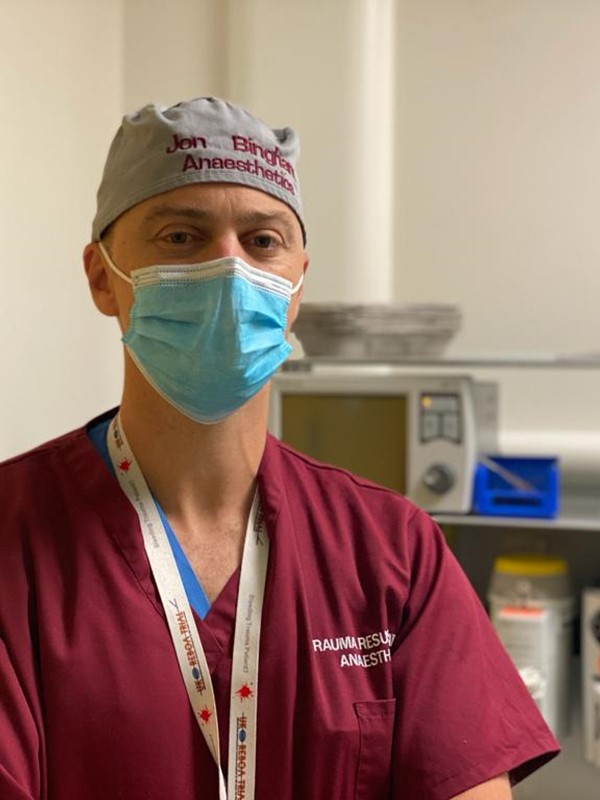Dr Jon Bingham - Trauma Resuscitation Anaesthetist

Dr Jon Bingham is a Trauma, Resuscitation Anaesthetist, a fairly new and innovative role that major trauma patients at Royal Stoke University Hospital really benefit from. The role offers expert management, advice and interventions to stabilise acutely injured patients and resuscitate them to enable repair of traumatic wounds. Here Jon talks about his job and why he loves it.
“I went into this line of work after qualifying and spending some time working in many different medical specialties, because it really suited my personality. I really enjoy acute patients and fast moving situations. I love being able to perform practical procedures that have immediate effects. If I give a drug or perform an intubation, I can immediately see the response of the patient and how it affects their body, how their blood pressure changes, how their blood oxygen levels change and other parameters that keep the patient going even when most severely injured.
“Having worked in the numerous specialities that trauma patients have to get treated by, I love how, as anaesthetists we have lots of ties with other sub specialities which mean we work day by day with people from all around the hospital. Traditionally the Anaesthetics Department of any hospital is often the biggest in terms of how many doctors they employ. This shows how dependent each area of the hospital is on our speciality and how we need to be practically involved in the care of the patient, not just on the phone or in a clinic, but at the bedside with them throughout the most important parts of their care.
“My special interests are related to the prehospital component of my work. I'm lucky to be able to work within and alongside the ambulance service who are an amazing group of people working in very difficult front line conditions. When the Emergency Department resus room looks busy and complex, imagine working on the roadside with the same patients as the first person on scene. It gives a hugely different perspective on managing patients that we are lucky to see and experience.
“We have had many memorable experiences as a collective group of doctors. For me the most memorable situations have been where multiple patients have been rushed in within a short period of time, all requiring life-saving interventions. During these times we have had to use our links with other anaesthetists around the hospital to pull expertise and man power from theatre, critical care, on call teams at home and other allied specialities to stabilise, treat and manage multiple patients all at the same time. This is similar to attending a major incident in the prehospital environment where resources management makes all the difference to the outcome of the patient or patients.
“In other situations we have treated patients who are so acutely injured that two or three of us are required alongside the Trauma Team Leader to stabilise patients. Gaining advanced vascular access while also anaesthetising patients and putting them on a ventilator and simultaneously decompressing life threatening chest trauma. One of the most memorable patients I ever remember treating needed all of these things immediately on being rushed off the ambulance.
“We also have to treat all ages of patient from new born babies who do unfortunately suffer trauma too, all the way up to those over 100 years old, whether that is acutely as they are brought in or later when we take them to theatres to operate. We have to be ready for anything that comes through the door and in whatever condition they may be in.
“Trauma, Resuscitation Anaesthesia can be one of the most stressful, sometimes terrifying specialities, where you can be asked to manage any kind of injury at any time, whether adult or child, whether unconscious and deteriorating or very much awake and in pain, needing reassurance and support. The variety of the job is one of its huge positives for me and I couldn't imagine working in any other field.”
